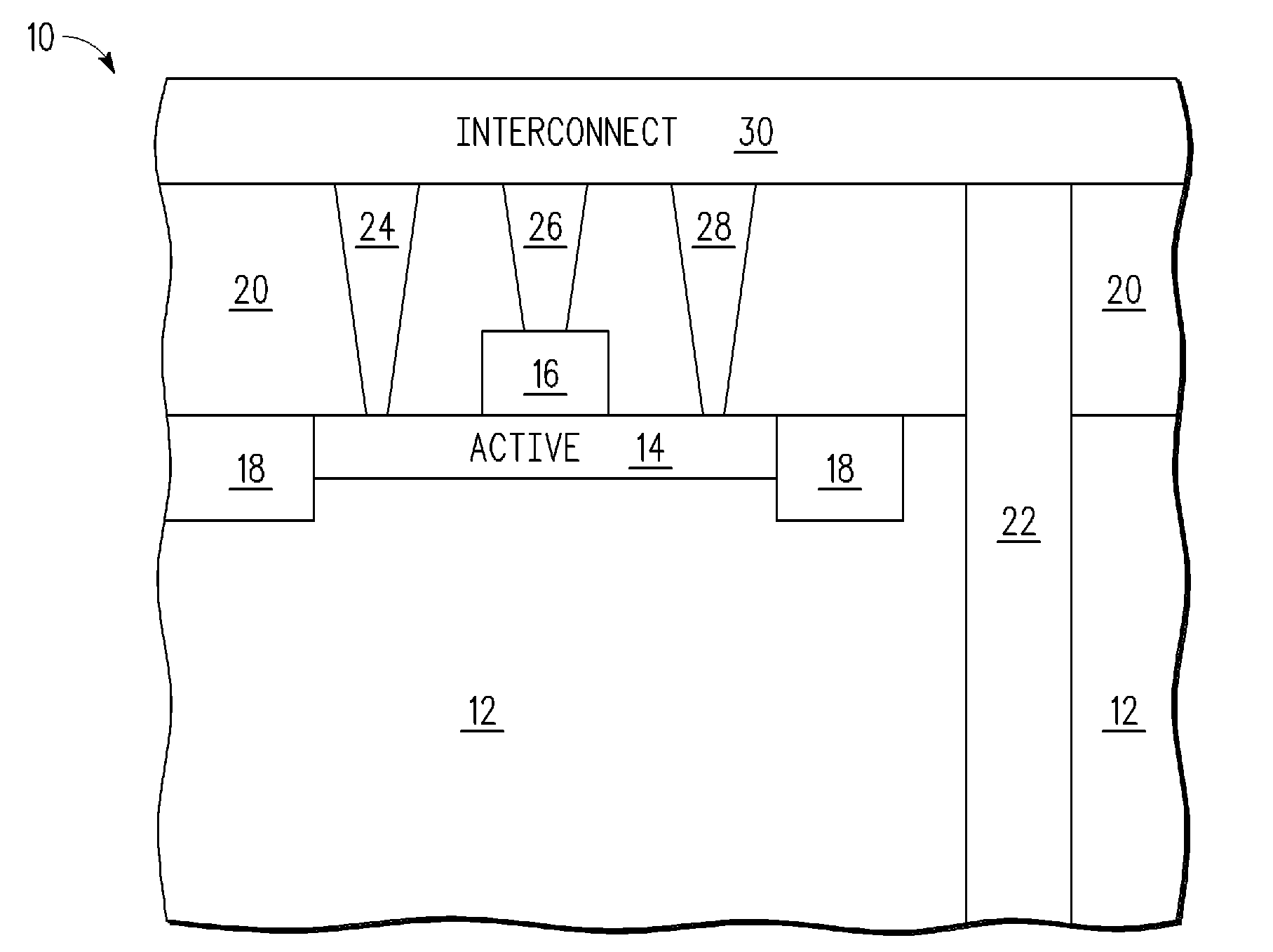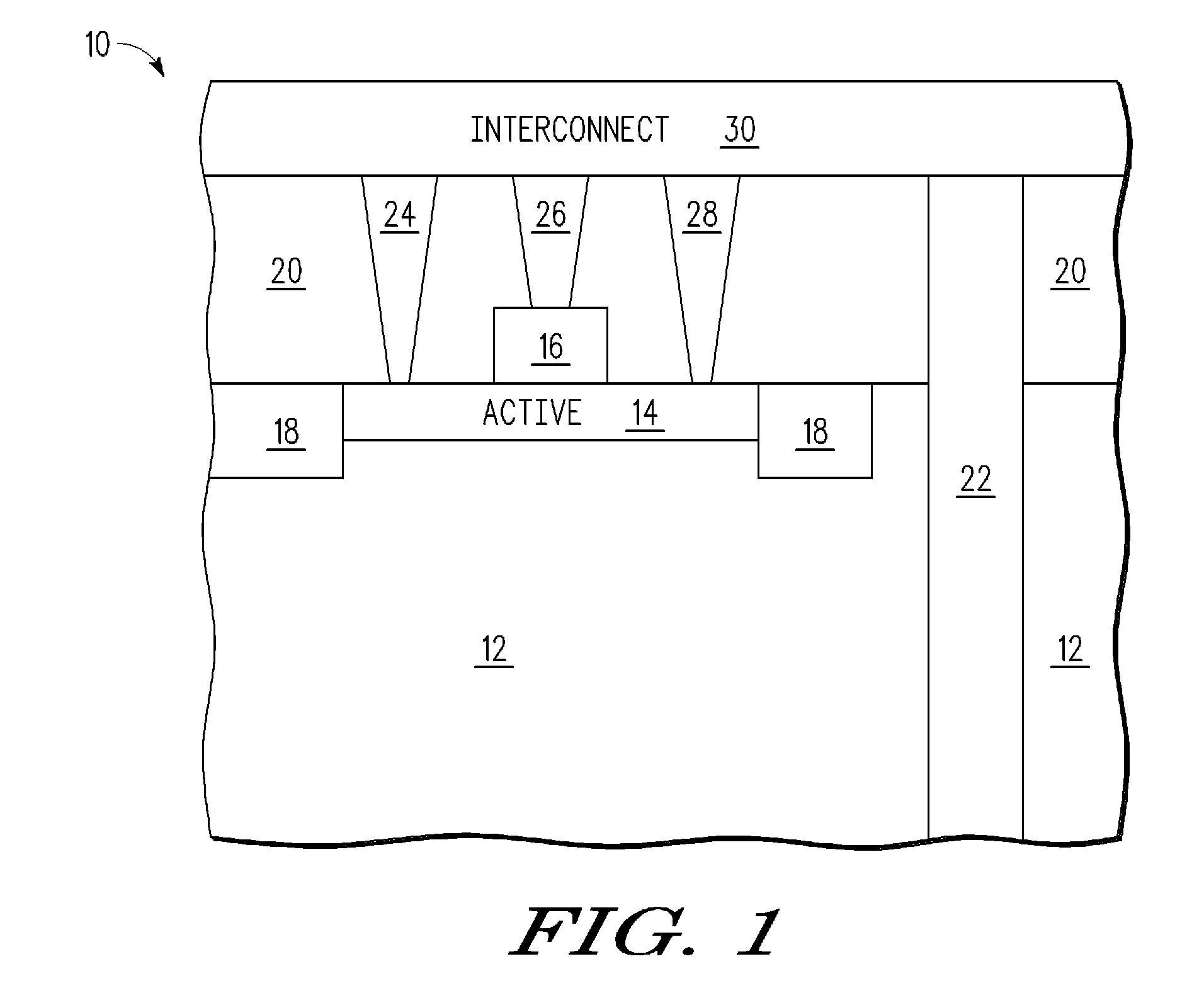Multilayered through via
a through via and multi-layer technology, applied in the field of semiconductor through vias, can solve the problems of ineffective copper through vias, many difficulties, and inability to meet the requirements of front-end process preferred materials,
- Summary
- Abstract
- Description
- Claims
- Application Information
AI Technical Summary
Problems solved by technology
Method used
Image
Examples
Embodiment Construction
[0025]In one aspect, a through via is made by forming an opening in a substrate to a first depth, a first layer of titanium nitride is deposited to line the opening. A much thicker first layer of tungsten is deposited over the first layer of titanium nitride. After the deposition of the first layer of tungsten, a second layer of titanium nitride is deposited in the opening. After the deposition of the second layer of titanium nitride, a second layer of tungsten is deposited in the opening. As needed, an etch back of the first layer of tungsten may be etched back to remove tungsten at the top portion of the opening. Subsequent processing establishes contact to the tungsten in the opening, and a backgrind of the substrate is performed to expose tungsten at a bottom of the opening. Also it is beneficial to precede the first titanium nitride layer with a titanium layer. This is better understood by reference to the drawings and the following specification.
[0026]The semiconductor substra...
PUM
| Property | Measurement | Unit |
|---|---|---|
| thickness | aaaaa | aaaaa |
| width | aaaaa | aaaaa |
| width | aaaaa | aaaaa |
Abstract
Description
Claims
Application Information
 Login to View More
Login to View More - R&D Engineer
- R&D Manager
- IP Professional
- Industry Leading Data Capabilities
- Powerful AI technology
- Patent DNA Extraction
Browse by: Latest US Patents, China's latest patents, Technical Efficacy Thesaurus, Application Domain, Technology Topic, Popular Technical Reports.
© 2024 PatSnap. All rights reserved.Legal|Privacy policy|Modern Slavery Act Transparency Statement|Sitemap|About US| Contact US: help@patsnap.com










